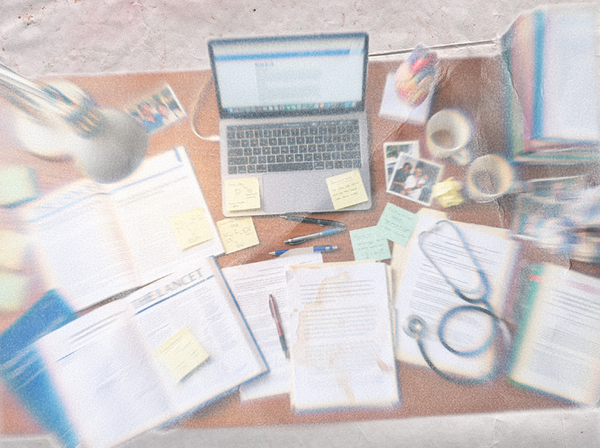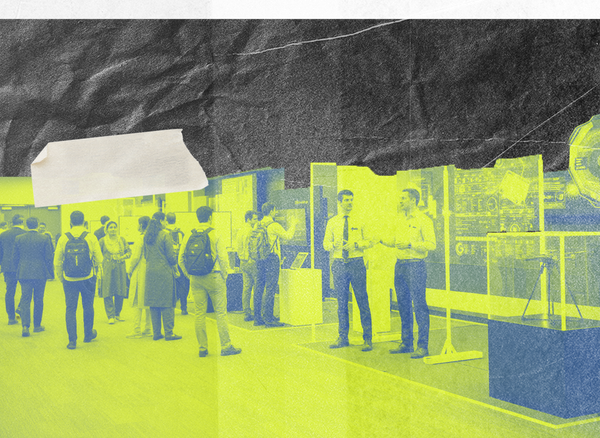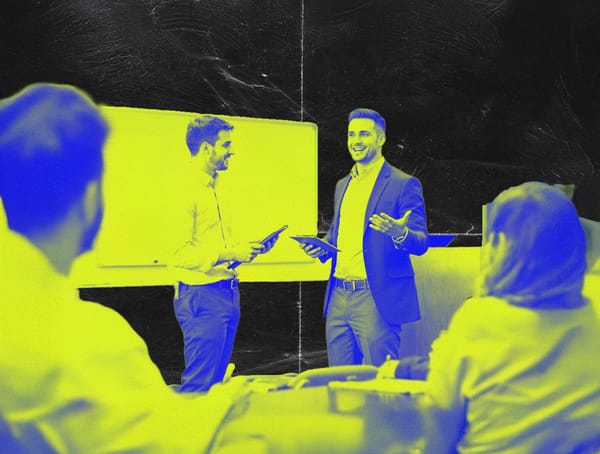The Five Design Mindsets That Transform Medical Communication
Discover 5 proven mindsets that turn EM presentations into engaging, behavior-changing sessions. Includes a real case study + free quick reference card.

Last week, we diagnosed the problem: most medical presentations are built for information transfer, not behavior change. We don’t design for the outcome we want — we design for documentation, completeness, or habit.
And yet, as we saw, emergency medicine already has the raw ingredients for a fix. The same mindsets that make us effective on shift can make us transformative in the conference room — if we apply them with intention.
In design thinking, these are called design mindsets. You already practice them in patient care. The shift is learning to use them in education and communication.
Why Mindset Beats Method
Every EM physician has been through the “better presentations” workshop; fewer bullet points, clean slides, speak up. It’s like telling a new intern, “Just be more confident during intubations.” Helpful? Not really.
Skills matter, but skills without mindset are brittle. You’ll default back to old patterns under pressure. What changes the game is adopting a way of thinking that shapes every choice you make about content, visuals, and delivery — no matter the topic, time slot, or audience.
The Five Mindsets (and How to Use Them in EM)

The Five Mindsets is adapted from the book, Designing Your Life
- Curiosity
From “This is how we’ve always done it” to “I wonder what would actually help my audience learn.”
On shift, curiosity keeps you from missing the zebra. In conference, it keeps you from recycling the same format because “that’s what everyone does.”
EM example: In your next complex case presentation, instead of running through every lab chronologically, you pause and ask: “At this point in the patient’s course, what would be on your differential?” Now the room is thinking with you, not just watching.
Design tool: Curiosity reframes prep as exploration. Ask: "What do they need most?" Not "What do I know most about?"
- Awareness
From autopilot recitation to intentional teaching.
On shift, awareness is reading the room in a crashing patient. In conference, it’s noticing when the room’s energy drops, or when you’ve slipped from teaching into reciting.
EM example: You’re presenting QI data on door-to-antibiotic times. You catch yourself speeding through the intervention slides (the actual solution) to get to the next metric. You stop, slow down, and refocus the group on what changes they can make tomorrow.
Design tool: Awareness lets you adjust in real time. Watch peoples' faces. Listen for note-taking pauses. Look for body shifts. Behavior informs good design.
- Bias Toward Action
From “I should improve my presentations” to “I’ll test this idea next week.”
Bias toward action is the EM mindset that gets the airway secured before the perfect plan is in place. In communication, it means trying new structures, formats, and questions immediately, not waiting for the “ideal” presentation to debut.
EM example: You decide to try the three-act structure for your next M&M case:
- Setup – patient and stakes
- Journey – decision points and challenges
- Resolution – outcome and lessons
It’s not perfect yet, but you get real feedback while the stakes are low.
Design tool: Prototypes beat perfection. Every idea is a prototype. Every presentation is a chance to test the prototype.
- Reframing
From “Cover everything” to “Teach one thing well.”
On shift, reframing turns “noncompliant patient” into “patient struggling with access.” In presentations, it turns “tell them everything I know” into “focus on one change I want them to make.”
EM example: A medication error case could be a blow-by-blow of what happened. But reframing turns it into: “How might we design our med administration process to prevent this type of error?”
Design tool: Before you build slides, finish the sentence: After this presentation, I want them to…
- Radical CollaborationFrom “I teach, you learn” to “We build understanding together.”
On shift, you lean on nurses, techs, and consultants to get the best outcome for your patient. In conference, you can lean on them for the best outcome in learning.
EM example: Rolling out a new triage protocol? Invite a nurse to co-present. Let them explain workflow impacts from their perspective. The buy-in will come faster, because they were part of the teaching.
Design tool: Collaboration isn’t just a nod to inclusivity, it’s a shortcut to relevance and adoption.
A Case Study: How Five Mindsets Transformed a Case Conference
The five mindsets aren’t theoretical — they’ve been applied in real EM education with measurable results. One powerful example comes from the Challenging Case Conference developed at LAC+USC Medical Center during the COVID-19 pandemic.
Faced with fewer in-person cases and the limitations of virtual learning, the team redesigned their traditional whole-case conference into a gamified, low-fidelity simulation:
- A resident team submitted a challenging real case.
- A different team “played” through it live over Zoom, making diagnostic and management decisions in real time.
- Dice rolls introduced unpredictability to mirror real EM uncertainty.
- The audience engaged through a live chat, sharing reasoning pearls and alternative approaches.
- A facilitated debrief brought both teams and attendees into open discussion about cognitive challenges and system issues.
Here’s how each design mindset came to life:
Curiosity – Faculty asked, “What would actually make virtual case conference engaging and useful for residents?” They explored new formats instead of simply replicating the old one online.
Awareness – They recognized that standard virtual conferences were producing low engagement and that passive listening wasn’t building clinical reasoning skills.
Bias Toward Action – Rather than spend months designing the “perfect” solution, they piloted the gamified simulation right away in their weekly didactics.
Reframing – They shifted the conference’s goal from “cover every detail of the case” to “develop and test clinical reasoning under uncertainty.”
Radical Collaboration – The design invited active participation from both resident teams and the broader audience, breaking down hierarchy and fostering an open, stigma-free discussion of medical errors.
The results:
- Increased engagement compared to traditional formats.
- Normalized discussion of mistakes and uncertainty.
- Improved perceptions of clinical reasoning skills among participants.
- Greater faculty participation and richer departmental dialogue.
Conclusion: Designing the Way You Communicate
The five design mindsets are not about adding more to your to-do list. They’re about changing the lens you use to prepare, deliver, and adapt every presentation. From a 5-minute sign-out to a 45-minute M&M.
Emergency medicine already trains us to be curious, aware, action-oriented, reframing thinkers, and collaborative under pressure. The only shift is to apply those same instincts to communication. The result is presentations that don’t just transfer information — they change how people think and act.
You don’t need to master all five mindsets at once. Start with one. Apply it to one presentation this week. Notice what happens. Build from there.
Next week: We’ll take these mindsets and put them into action with the P3 Framework — a step-by-step system for building medical presentations where the message, media, and delivery all multiply to create impact.
Ready to Transform Your Next Presentation?
Don’t let your next EM talk become another data dump.
Get the Five Design Mindsets Quick Reference Card — your pocket-sized guide to building presentations that actually change how people think and act.
Sign up free to download instantly and start applying these mindsets to your next conference session.






